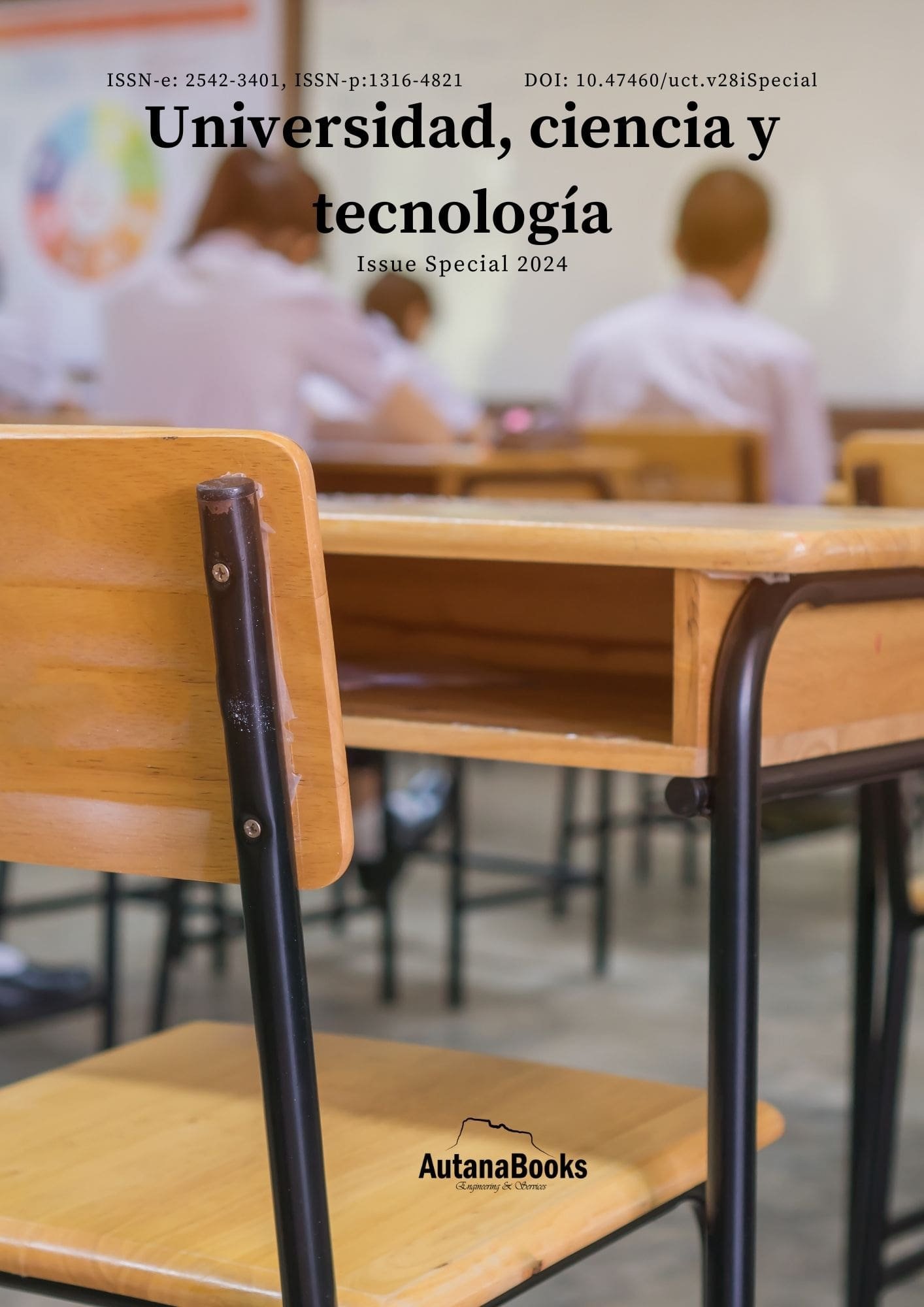Abstract
The study addressed the effectiveness of the flipped classroom in learning English, using an applied-experimental quantitative approach with a quasi-experimental design. The sample of 30 high school students was selected through non-probabilistic convenience sampling. An objective assessment was used to measure English comprehension levels, and the data analysis technique consisted of a non-parametric Mann-Whitney U test to test the research hypothesis. After implementing the flipped classroom program, the results revealed superior performance in the experimental group, highlighting the program's effectiveness and relevance in improving and acquiring linguistic skills in English by the students.
References
[2] J. Muntaner, C. Medina y B. Amengual, «El impacto de las metodologías activas en los resultados académicos,» Profesorado Revista de currículum y formación del Profesorado, vol. 24, nº 1, p. 19, 2020.
[3] L. N. Quoc, «EFL Students’ Perceptions of Online Flipped Classrooms,» International Journal of Learning, Teaching and Educational Research, vol. 21, nº 9, pp. 460-476, 2022.
[4] E. Namaziandost y F. Çakmak , «An account of EFL learners’ self-efficacy and gender in the Flipped Classroom Model,» Education and Information Technologies, vol. 25, pp. 4041-4055, 2022.
[5] A. Roohani y P. Etemadfar, «Effect of Micro Flipped Method on EFL Learners' Speaking Fluency,» Journal of Asia TEFL, vol. 18, nº 2, p. 559–575, 2021.
[6] M. Yasar y M. Polat, «A MOOC-based Flipped Classroom Model: Reflecting on pre-service English language teachers’ experience and perceptions,» Participatory Educational Research, vol. 8, nº 4, pp. 103 - 123, 2021.
[7] W. Bin-Hady y A. Hazaea, «EFL students’ achievement and attitudes towards flipped pronunciation class: correlational study,» PSU Research Review, vol. 6, nº 3, p. 175–189, 2022.
[8] Mineduc, Currículos de educación general básica para los subniveles de preparatoria, elemental, media y superior; y, el currículo de nivel de bachillerato general unificado, Quito: Mineduc, 2016.
[9] F. Li, «he Impact of the Flipped Classroom Teaching Model on EFL Learners’,» World Journal of English Language, vol. 12, nº 5, p. 136–147, 2022.
[10] M. Hajebi, «Flipped Classroom as a Supporting Plan for Iranian EFL Learners’ English Improvement in Super Intensive Courses,» Theory and Practice in Language Studies,, vol. 10, nº 9, pp. 1101-1105, 2020.
[11] G. Alzahrani, «The Effect of Micro-Flipped Classroom in the Context of Distance Learning on TESOL Master Students' Achievement,» World Journal of English, vol. 12, nº 8, p. 68–73, 2022.
[12] H. Quadir, A. M. Alfaifi y M. Saleem, «The flip side of the flipped classroom model: A study of EFL learners’ hindrances,» World Journal on Educational Technology, vol. 14, nº 5, p. 1482–1495, 2022.
[13] C. Europe, Self-assessment grid - Table 2 (CEFR 3.3) : Common Reference, Common European Framework Reference Languages, 2023.

This work is licensed under a Creative Commons Attribution 4.0 International License.


